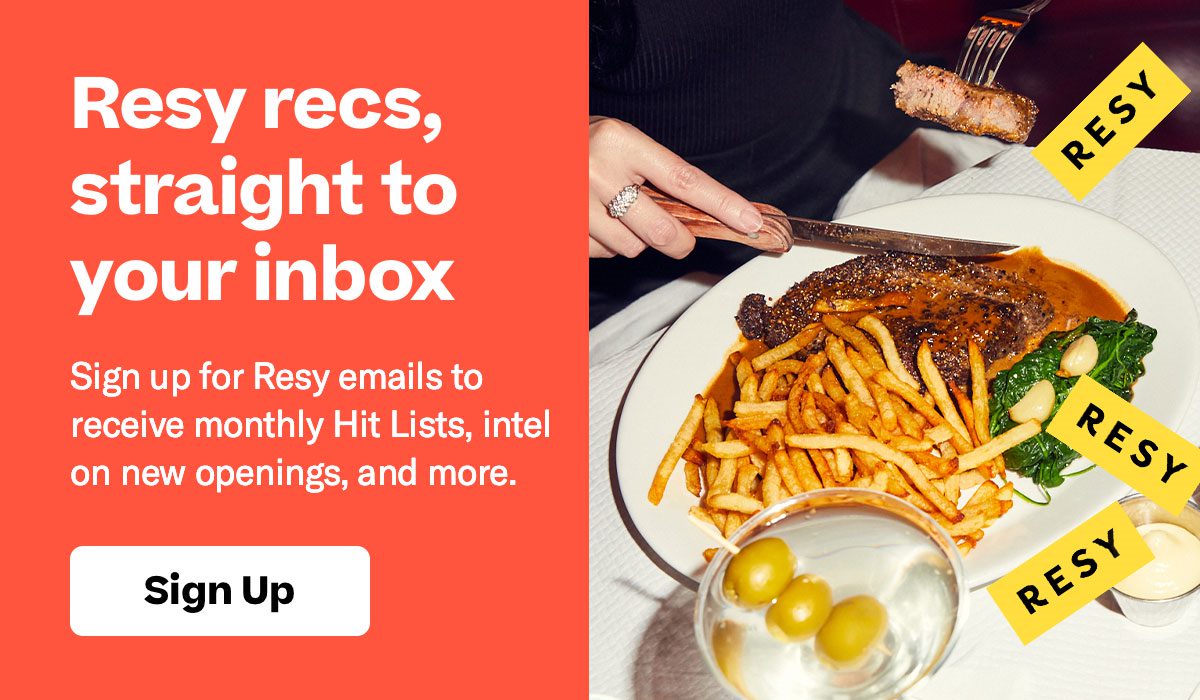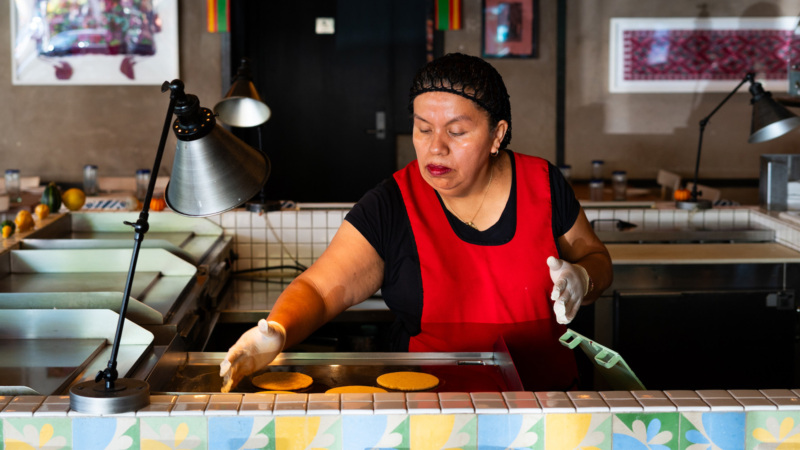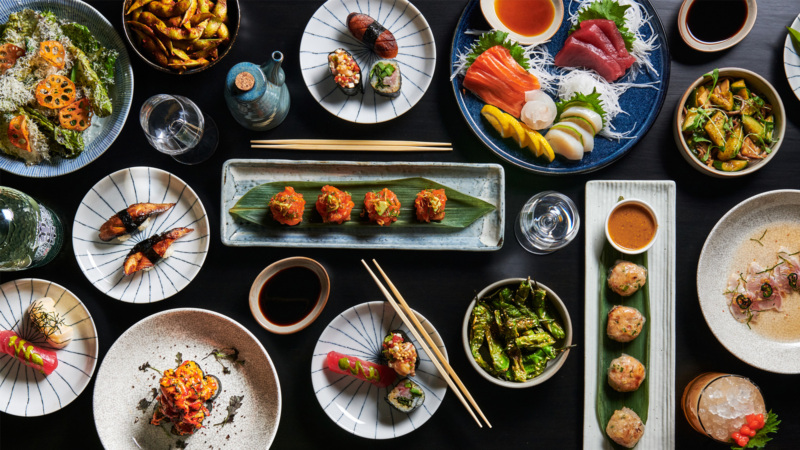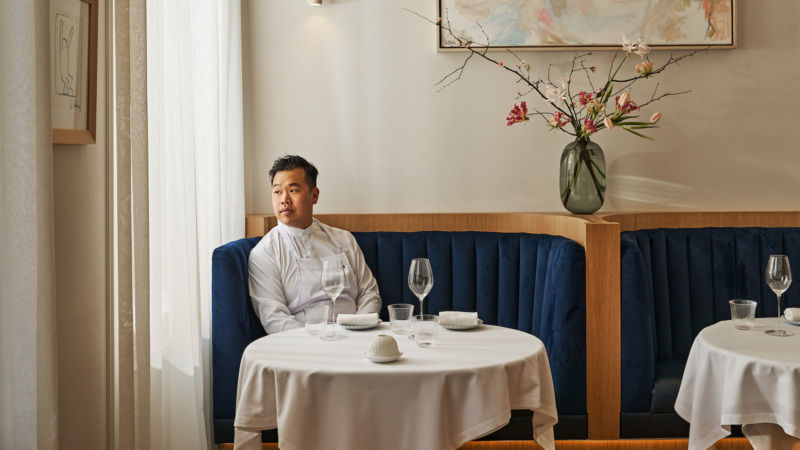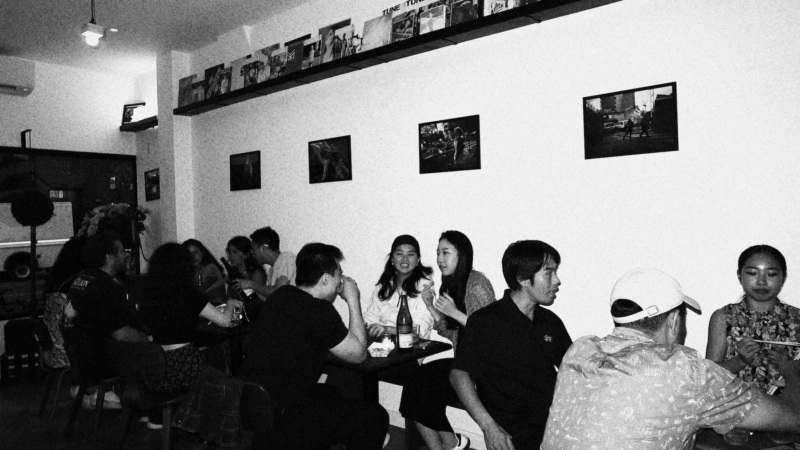
All About Oncheon, a Hot Springs-Inspired Oasis in Koreatown
Manhattan’s Koreatown, while relatively tiny compared to other neighborhoods, is a bustling area even for Midtown standards. Along with heavy foot traffic from nearby landmarks like Herald Square, Penn Station, and the Empire State Building, a dizzying amount of Korean barbecue spots, karaoke lounges, and bubble tea shops are packed in to just a couple of blocks. But right on Fifth Avenue off 32nd Street, an unexpected oasis lies amidst the bustle.
Oncheon, which is the first New York venture for hospitality group Glow Seoul, takes its name from the Korean word for hot springs. And indeed, stepping inside the restaurant feels like entering a tranquil bathhouse. We caught up with general manager Brian Pai to talk about the concept behind Oncheon and, of course, what kinds of food and drink visitors can expect to enjoy.
The Resy Rundown
Oncheon
-
Why We Like It
A wellness-focused approach to hotpot that borrows from Korean hot springs culture to leave guests feeling nourished, not stuffed. The interior, drinks, and food are all aesthetically irresistible, too. -
Who and What It’s For
Meat lovers, vegetarians and vegans (yes, really), cocktail fans, the makgeolli-curious, and anyone looking for a little peace and quiet within the bustle of Midtown. -
Essential Dishes
Of course, you can’t skip the shabu-shabu. Get it with the signature broth, made from beef and pork, or the porcini broth if you’re feeling something plant-based instead, and order a side of noodles to soak up the dregs as you get to the bottom. Also, get the optional plate of sides that includes the squid mul-hae, a spicy raw fish soup made with green chiles instead of the more traditional red ones.
-
Must-Order Drinks
The Glow Seoul, a fruity soju cocktail that the Oncheon team brought over from Korea for good reason. Also unmissable (and perfect if you’re looking for something a little lower in alcohol) are any of the three makgeolli cocktails. You should probably just get them all, to be safe. -
How to Get In
A few small tables are set aside for walk-ins, but if you’re coming with a group of three or more, especially at peak times, reservations are recommended. Bookings drop on Resy 30 days in advance. -
Fun Fact
As a national favorite when it comes to protein in Korea, the menu includes a lot of beef. Its popularity dates back to dynastic times when beef was highly inaccessible and everyday working people would sometimes save up all year to buy a cut from their local butcher.



1. The interior is a hot springs-inspired oasis.
For those who aren’t familiar with the concept, oncheon bathhouses are built around natural hot springs, where guests can soak and unwind (similar to Japanese onsen). At Oncheon in New York, you’re transported to a peaceful hot spring the moment you step inside. Big screens display images of snow-covered trees swaying gently, as if you’re looking out the window at the Korean countryside. Wells of flowing water provide peaceful white noise as steam gently rises into the air, making the small space feel like a little haven in the middle of the city. For those who work in the area, lunch breaks are about to get a whole lot more relaxing.
Meticulous presentation comes into play for the food and drink itself, too. The cocktails are photogenic, and several are served with decorative accessories (in one case, a tiny hat). Even the kimchi, rather than simply being tossed into a bowl, is served in a rolled shape.
Nurturing from the inside is more synonymous to the traditional hot spring experience in Korea than any hot springs you might be able to find out here.
2. Oncheon offers a health-minded take on hotpot.
A visit to a traditional oncheon is meant to be a rejuvenating, spa-like experience. This same principle also applies to the food, which is designed to offer some healing care to your body from the inside, similar to the way the hot springs do from the outside.
“Nurturing from the inside is more synonymous to the traditional hot spring experience in Korea than any hot springs you might be able to find out here,” Pai explains.
At Oncheon in New York, there are essentially two different meal formats: Chanhap meal boxes with a choice of protein over rice (currently only available at lunchtime, though they do plan to offer them for dinner in the future); and Korean shabu-shabu, or hotpot. Both come with banchan, which are assorted side dishes served as accoutrements to Korean entrées.
Another reason oncheon food tends to be lighter than what many New Yorkers have come to expect from hotpot is that for many in Korea, oncheon baths are a daily wellness practice. So, accordingly, the food needs to be the kind of thing people can eat regularly, not just for once-in-a-while celebrations. With wellness at the front of mind for hot spring cuisine, Oncheon leans towards offering non-processed options for toppings, like cured meat, fish cakes, or noodles (though the latter two are available as optional add-ons). As an alternative, there’s thinly sliced raw meat and vegetables. Dishes that are commonly grilled are instead slow cooked, avoiding possible toxins that are reportedly present in some charred meats. Even items that are fried, like the crispy beef and seafood fritters, aren’t heavy or greasy like you might expect a fritter to be.
“It’s lighter than anything fried that you’ve ever had,” says Pai.
How they accomplish it is a secret unbeknownst even to us — they use a proprietary technique, “exclusive to our kitchen,” that Pai couldn’t reveal.


3. Ingredient quality is key.
The wellness ethos also shows up in Oncheon’s choice of proteins. Pai and the rest of the team realized that by and large, New Yorkers are used to their hotpot being all-you-can-eat, which Oncheon is not.
“If we’re to establish ourselves here in New York City as a place that is hot pot but is not all-you-can-eat,” Pai said, “we had better have the environment, service, and quality to be able to back it up.”
The emphasis on quality over quantity also works with the theme of healing through food: healthy, nurturing dishes start with wholesome, high-quality ingredients. The kitchen uses skin-on cuts of pork, for instance, because they’re rich in collagen. When it comes to beef, options include prime sirloin ribeye, A5 wagyu, and wagyu sirloin, to name just a few. The vegetables rotate based on what’s in season.
And though the meat options are plenty, your vegan and vegetarian friends don’t have to sit this one out. One of the broth options is meatless, made instead from porcini mushrooms.
“If we didn’t tell you it was vegan, you wouldn’t believe it,” says Pai.
4. The beverage program is not to be slept on.
You might not expect it from a restaurant that holds “wellness” as one of its core tenets, but Oncheon has a fantastic cocktail menu as well. They’re steering away from classic cocktails, instead, opting to showcase their own signature drinks.
“If we do happen to have customers that come from Korea, and have been to our Korea locations before, I want them to look at and taste our cocktails and be massively confused – ‘Am I in Korea?’” Pai jokes. He’s not just referring to consistency – the drinks feature flavors and ingredients that can be hard to find in the U.S., like yuja (a citrus fruit) and preserved ginger.
One of the signature drinks bears the name of the hospitality group, the Glow Seoul, which is a testament to how highly they regard that particular cocktail. It’s made of golden barley soju, pear vodka, and quince tea.
Makgeolli features prominently in the cocktail lineup with three drinks to choose from. Tea lovers will gravitate towards the Milk Tea Honeycomb Makgeolli, which is made using brown sugar that’s been infused with Earl Grey tea. Makgeolli and honeycomb, it turns out, is actually a classic combination in Korea. Typically, chewing on honeycomb will eventually render it gummy and tough — but when it’s stirred into makgeolli, that doesn’t happen.
“One thing that traditional Korean people like to do with makgeolli is to take a piece of honeycomb and be able to stir it in there. The flavor of the honey pairs well with it,” says Pai . “The acidity of the makgeolli actually dissolves honeycomb into something that is very flaky, nice, and pleasant,” he adds. “It actually absorbs the sweetness of the makgeolli, as well.”
And those who aren’t drinking don’t end up with the short end of the stick. At present, the menu offers five non-alcoholic wines — even more than they have of regular wines — and the bar makes three different zero-proof cocktails, too.
“Even if you don’t drink alcohol, we still want you to be able to have the opportunity to experience traditional Korean flavors,” Pai said.


Oncheon is open on weekdays from 11 a.m. to 3 p.m. for lunch and 5 to 10 p.m for dinner. On weekends, lunch is from 11 a.m. to 2:30 p.m. and the dinner menu is served from 2:30 to midnight.
Ariana DiValentino is a writer, filmmaker, and actor based in Brooklyn. Follow her on Instagram, X, and TikTok. Follow Resy, too.
